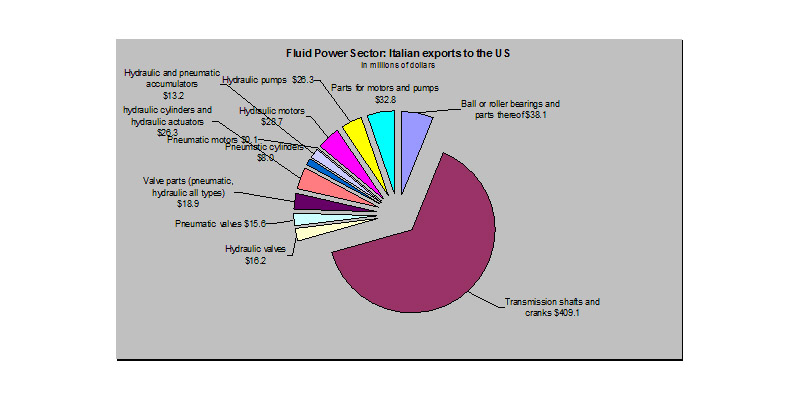As 2012 gets underway, manufacturers in a diverse number of sectors hope that improvements witnessed in 2011 will continue. One of the sectors that had shown signs of growth and optimism for that matter, over the first three quarters of 2011 was fluid power. Based on statistical information collected by the US Department of Commerce, the sector over the last several years, has witnessed a renewed interest from the downturn it experienced in the 2008-2009 recession.
US imports within the fluid power sector amounted to $11,5 billion within the first nine months of 2011 - an increase of 33.58% over the previous year and a 31.14 % increase when compared to 2009.
Two major segments within the fluid power sector, which saw strong imports, were transmission shafts and cranks ($5,3 billion) and ball or roller bearings and parts ($2,1 Billion).
Within the same period, the largest increases for US imports compared to the previous year were hydraulic motors (+66.12%), valve parts (+48.64%) and pneumatic cylinders (+47.17%).
Of US imports for the sector in 2011, Italy’s share grew to $633.2 million, characterized by an increase of 28.57% compared to the same period in 2010. Thanks to such growth, Italy remained the US’s sixth largest supplier, preceded only by Germany, Japan, China, Canada and Mexico.
A breakdown of Italy’s share to the US for 2011 showed transmission shafts and cranks as the major component of shipments ($409.1 million), ball or roller bearings and parts ($38.1 million) and parts for motors and pumps ($32.8 million). Largest import increases over the previous year were pneumatic motors (+115.68%,) hydraulic motors (+89.56%) and hydraulic valves (+74.81%).
If 2011 US imports were any indication of what to expect in 2012, the fluid power sector will be one which will continue to experience dynamic growth, thanks in no small part to contributions made by Italian solution providers.


























